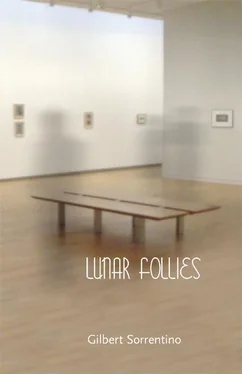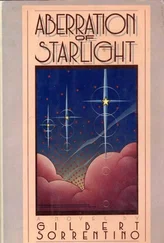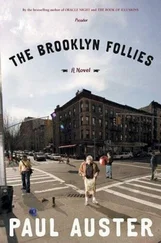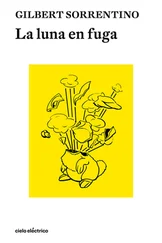Gilbert Sorrentino
Lunar Follies
“… while the ears, be we mikealls or nicholists, may sometimes be inclined to believe others the eyes, whether browned or nolensed, find it devilish hard now and again even to believe itself.”
FINNEGANS WAKE
“You’re painting a shoe; you start painting the sole, and it turns into a moon; you start painting the moon, and it turns into a piece of bread.”
PHILIP GUSTON
George Alphonsus, famed as the Supreme Master of Magic, is said to have had a hand in creating the illusion that has, quite successfully and convincingly, asserted itself as “art for our time.” The question asked most frequently has been, “what of the millennium?” Or, on occasion, “what of the exciting millennium?” George creates the convincing illusion, which, most agree, silences the seasoned and cynical journalists, who are, of course, the framers of such questions as have to do with “art for our time.” For instance: “Is baseball too slow for our ultra-busy, speeded-up, on-the-go age?” “Will the loathsome cockroach lead the way to a cure for breast cancer?” “Was John Kennedy Junior a closet queen?” “Do we have to die?” “How can we be happy in a bad job?” And “Is birth-control science the way to the Rapture?” But to the Supreme Master of Magic, anent his astonishing and artistic illusions (which, he insists, and strongly, on calling “The art of astonishing and artistic illusions”), they ask, e.g., “How does it feel, George?” Silence usually ensues, and so it’s on to the snow-chains story; the heat-wave story; the story of the tough coach and his swell young protégé; the killer-hurricane (with puppy) story; the mudslide story and the people who will rebuild; the forest-fire story and the people who will rebuild; the flash-flood story and the people who will rebuild; the depraved priest story and the youths he abused every night for nine years; and, of course, the magnificent new stadium that will seat 150,000, cost nothing, make an entire city rich, and stamp out the cocaine trade as well, so that the little guy, if white, will win at least maybe story. And all the while, through rain and fog and the golden California sun that bakes the brain right through the jaunty baseball caps that are always the rage, George, the Supreme Master of Magic’s, newest illusion is, yes, right this way, over here, yes, here you go, right by the spilled latte, yes: illusion dot com dot magicgeorge dot com you chumps.
The place or space or venue is rife or blossoming with pictures or photographs or collages or photocollages of the famous avant-garde publisher’s wife, the famous underground diva or fringe dancer or performance artist, whose most renowned and transgressive “happening”—as such events were termed in the sixties in all their rude and feverish innocence and glamour—“Cunnus Delicti,” concluded with the artist slowly pulling a long, thin scroll of paper from her vagina. In between periods of “whirlwind creativity,” as her husband smilingly notes, she likes to read the submissions that come in over the transom, as they occasionally say in publishing. This spousal remark is recorded, in its totality, amid the images that virtually surround one in the studio, amid a clash of vital forms. One novel was thought to be too long for its fragile premise, yet the choreographic instincts that inform the artist’s “mind” are too present ever to permit her to define the word “premise. “This has always been her way, so says her adoring husband, from behind his aromatically billowing briar. “She has an eye for the authentic,” he is quoted as saying in a yellowing, brittle newspaper clipping, the words glowing with orange highlighter ink or solution or is it, perhaps, a kind of water color? Above this focal point, or “coign,” as a dear old friend from “boardwalk days” has called it, this endearing remark, virtually palpable in its compassion for the real, the authentic, the unashamedly human, is a photograph of the artist, in her defining moment, pulling the paper scroll from her proud, naked vagina; and, just above the photograph, sharing the wall space that overlooks the massive worktable crammed, as always, with ideas for new dances, new performance ideas, new and startling contortions, just above it, stained, creased, covered with admirers’ notes of congratulation and admiration, and, forebodingly, warning, like a stern aegis, or a harbinger of just what art can be, is the discolored scroll itself, assertive, defiant!
Terrifying photographs, drawings, and poor collages of “Old Geordy Sime,” one of his era’s most famous pipers, alternate with miniature reproductions of the Alard Stradivarius, the installation, a word nicely borrowed from the Persian (like “peach”), creating a kind of frieze that dominates the small and warmly claustrophobic room. The title of this particular installation is “Welsh Harps,” an oblique hommage to Sime. The artist’s irrepressible sense of humor is everywhere apparent here. The portrayed women defend their actualities in no uncertain terms, here on the cutting edge. “They’ll no longer take ‘no’ for an answer,” would seem to be the essential rubric under which deft revolutions occur; and then there is “neon is their middle name,” another call to arms. The word “cunt” may not, of course, be used, save in the correct, life-affirming way. Indian drums are scattered about, if drums can ever be “scattered.” Yet scattered they joyously are, in the ineluctable ways of craft, and craft is all, when you get right down to it. It’s time that artists who aren’t pulling their own weight were given the bum’s rush. “The Bum’s Rush” is, fortuitously, the overall title of the whole exhibit. Over on the other wall is the interior profile of an English church organ, which completes the diorama — calling capitalism, once more, to account. Dioramas, as presented by certain fabled buildings at the 1939 World’s Fair in Flushing Meadows, Queens, New York, were sublimely vulgar and made kitsch into the “art of our time.” “At will’s Musical Establishment” was first seen in the Yerba Buena Gardens in San Francisco, but was withheld from this particular show by those few who know. A wild twangling daily issues forth from all corners of the “space”: at one, three, and five P.M. “Ring dem bells!” is the wonted cry from the poets who get five free tickets each day, starting at noon. (This is not the Director’s doing!) Poets are likely to do just about anything for a buck, as they say, or for publication in Zing, Edelweiss Review, Insomnia News, Hurdygurdy, Blotto, and The Tribes. “Their hurts healed for a few dollars” or two contributor’s copies. On Tuesdays, senior citizens are admitted at half-price, God love them.
Here are the stars of eternity, some dressed as imitation ladies. In attendance, two-inch engineers, cut out of cardboard, and curious in transparent socks. The sun, which shines on the tableau, is red, and, as usual, round, something like the dial of a watch. The stars, it should be noted, cluster about a red table upon which are displayed a wooden spool that apparently once held thread, a scatter of paper clips, a tin airplane, and a few old elastics, or, as they are usually called, “rubber bands.” These items may, possibly, be glued to the table’s surface. There is, too, an unappetizing dinner rather carelessly crowded onto a small area of the table, where it has grown stone cold. In a corner of the room, a trunk, leather and lined with leather, ready for the stars’ vacation, is “gummed” all over with red stars and small photographs of tables and trunks; and next to it are its trays, removed so as to display their contents, nothing more than a number of hinged boxes, filled, almost to overflowing, with small discs of white cardboard edged with nickeled metal of some sort. Each disc has the same words carefully inscribed, in red ink, on one side: DARN, CONVEY, DISCOVER, SUCK; and on the other side: FASTER, TISSUE. It appears that the stars, or in any event those stars dressed as imitation ladies, refuse to examine or, for that matter, even glance at these “messages,” and that they will continue to refuse to do so.
Читать дальше












